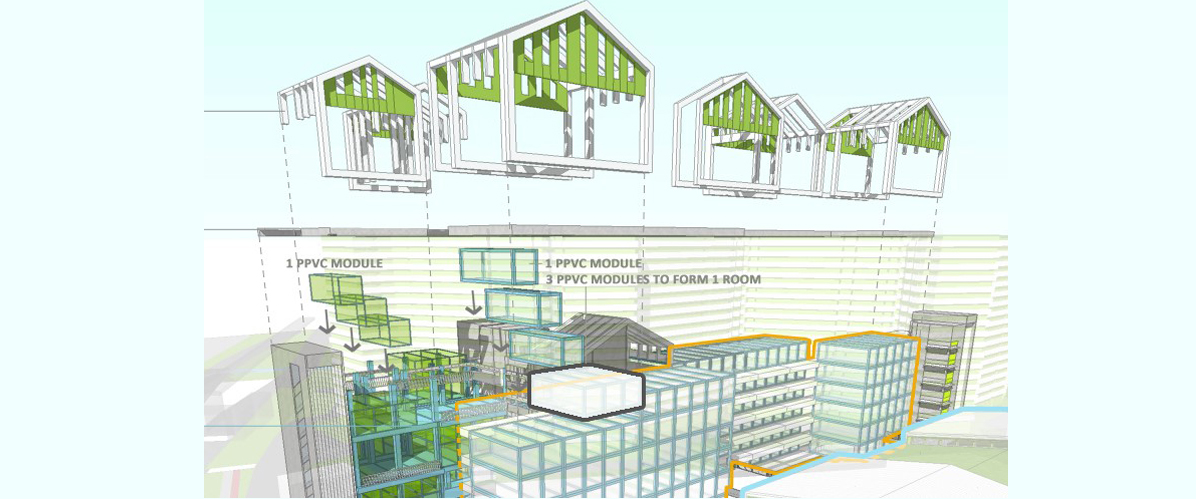30 June 2021
Faster but still high quality. This efficient approach must be embraced, says Director of RSP Singapore Studio, Tan Sew Guan
- Singapore is driving DfMA adoption by making it a criterion for government land sales.
- The design approach results in quick manufacturing and assembly, with less labour.
- Resistance to DfMA adoption arises mainly from stakeholder mindsets, which can be improved by education.
If DfMA had a poster boy, it would undoubtedly be the hospitals that China seemingly magicked up overnight in the early days of the Covid-19 crisis. The world watched, fascinated, as time-lapse videos outlined behemoth buildings sprouting up in days to meet the surging need for beds.
Suffice to say that DfMA – known in full as Design for Manufacture and Assembly – is a game-changer for architecture. This design-and-build approach focuses on efficient manufacturing and assembly with less time and upfront cost.
Traditionally, DfMA has been applied to sectors that require efficient production of high quality products in large numbers, such as automotives and consumer products – the most famous being Swedish furniture giant IKEA.
Now, the construction industry has begun to adopt DfMA. Architects are starting to study efficient layouts, firming up designs at a very early stage. Engineers are seeking to minimise design changes while ensuring module loading is within acceptable norms. Some of the RSP’s DfMA projects in Singapore include Crowne Plaza Changi Airport, Valour Primary School and an upcoming hotel on Club Street.
In Singapore, the government is driving DfMA adoption by instating it as a key consideration for Government Procuring Entities. One aspect of DfMA – Prefabricated Prefinished Volumetric Construction (PPVC) – is also a criterion for selected non-landed residential and hotel Government Land Sale sites.
Government mandates are driving initial DfMA demand, and accelerating economies of scale. But it is important for us as a practice to embrace DfMA to consistently create high quality buildings while reducing reliance on labour. This is especially important amid pandemic-triggered disruptions to foreign labour flows.
Typically, the resistance to DfMA arises from stakeholder mindsets: Some may feel that prefabricated buildings are of lower quality, while others balk at the lack of design flexibility or field concerns about higher technology costs.
Articulating the benefits of DfMA will go a long way to changing these mindsets. As technology improves, so do prefabrication capabilities: there is no difference in user experience in a DfMA and non-DfMA building. Manufacturing is easier, as designs make use of components readily available in the supply chain. Production can be done offsite, and production of parts and their assembly is minimised. Manpower costs are lower and the construction period is shorter, meaning owners obtain their building faster with lower project costs and less inconvenience.
To be fair, longer term maintenance costs could be a factor, especially for timber structure and steel PPVC joint checks. Firms should determine the payback period to neutralise the cost outlay and consider the benefits reaped.
To reap the greatest benefit, firms can identify elements and features which are most manpower-intensive on-site, focusing on trades that will yield high manpower savings when adopting DfMA. They can also partner overseas DfMA practitioners to further enhance their knowledge and capabilities.
The case for DfMA strengthens with greater industry standardisation. Perhaps in the future, we can look forward to initiatives that benefit everyone, such as shared online databases of object libraries, integrated construction and precast hubs, and even new procurement models deemed conducive for early collaboration among consultants, builders and prefabricators – which could even give developers more time to sell units.

Tan Sew Guan, Director, Singapore Studio
Sew Guan is a civil and structural engineer passionate about driving sustainability and the digital transformation in the built environment. With a focus on complex and new-to-market engineering innovations that challenge the norm, he is well-versed in navigating the design and built process to achieve the desired vision of the building design.
Share




